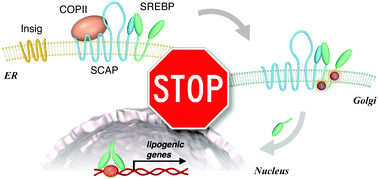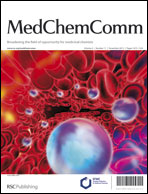Small-molecule inhibitors of SREBP activation – potential for new treatment of metabolic disorders
Abstract
Sterol regulatory element-binding proteins (SREBPs) are transcriptional factors that control lipid and cholesterol metabolism. Activation of SREBPs in response to a decrease in cellular sterols results in acceleration of the synthesis of fatty acids, triglycerides, and cholesterol. Aberrant SREBP activity has been linked to metabolic disease states, such as obesity, fatty liver, insulin resistance, hyperlipidemia, and atherosclerosis. Thus, inhibition of SREBP activation is a potential therapeutic approach to treating metabolic disorders. This review focuses on direct or indirect small-molecule inhibitors of SREBP activation.


 Please wait while we load your content...
Please wait while we load your content...